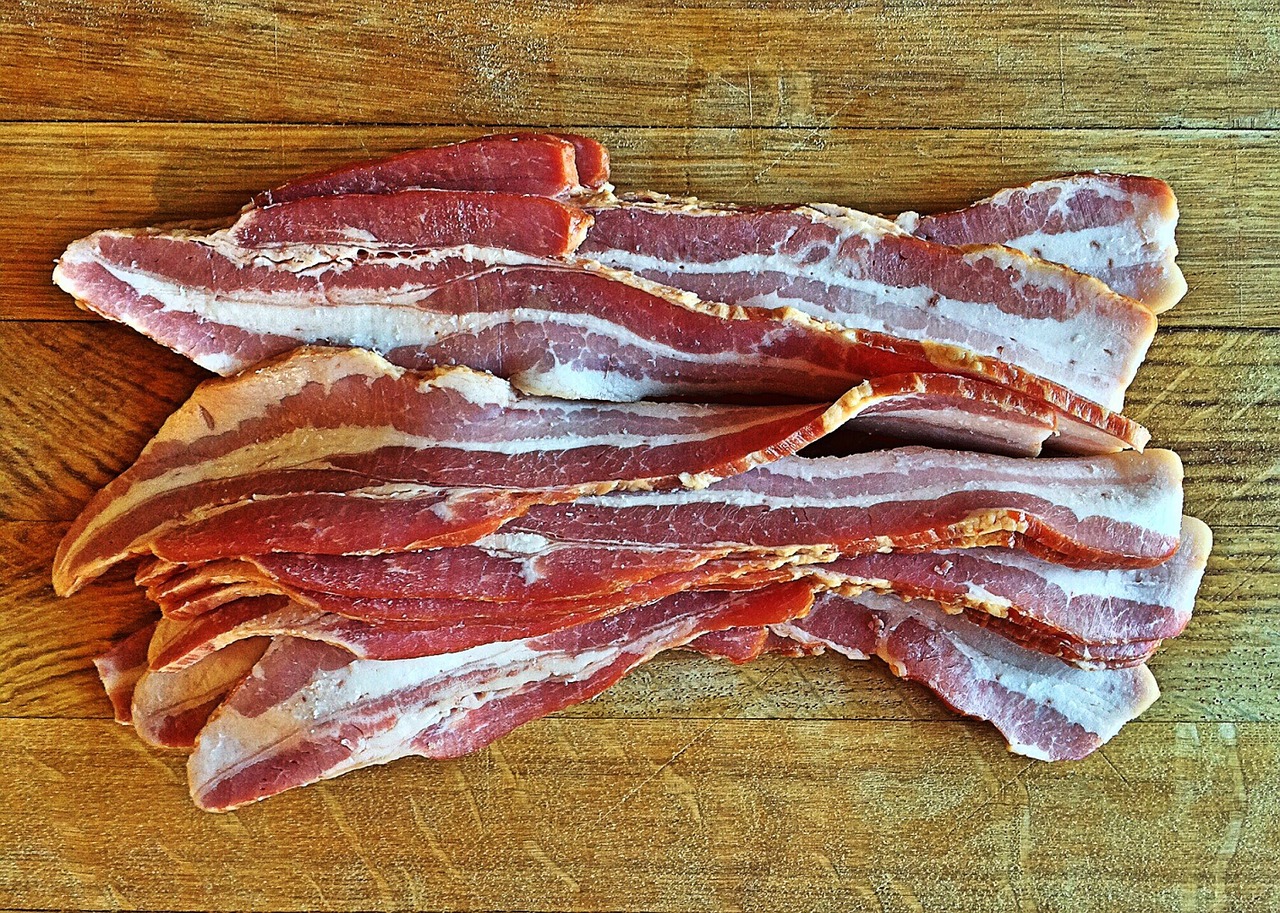What’s the difference between cured bacon and uncured bacon? The answer may surprise you.
Curing meats refers to the process of adding salt, nitrates, nitrites, and/or similar properties for preservation, color development, and flavor enhancement.
In short, bacon must be cured in order to avoid spoiling. Further, by definition, bacon is cured pork belly.
Therefore, the term “uncured bacon” is really a misnomer.
The difference between cured and uncured bacon lies in what is used during the preservation process. Bacon that is uncured is typically only prepared with ingredients that occur naturally; cured bacon contains chemicals and additives.
Both cured and uncured bacon:
- Are made from pork belly.
- Are soaked in a brine to prevent botulism.
- Have roughly the same amount of calories.
- Can be used in place of one another when cooking.
Cured bacon:
- Is cured with commercially prepared sodium nitrate or nitrite.
- Contains chemical additives.
- Lasts longer than uncured.
- Can be wet-cured or dry-cured.
Uncured bacon:
- Is cured with a natural salt such as celery salt.
- Does not use chemical additives.
- Tends to contain more sodium than cured.
The types of curing, as mentioned above, are wet-cured or dry-cured. In Food Network Magazine’s bacon issue, which came out two months ago, they explain the difference clearly:
- Wet-cured: most commercial bacon is prepared this way, brined in salt water with sodium nitrite. Some manufacturers inject the brine into the meat, which is considered to be pumped bacon.
- Dry-cured: a less common method that involves rubbing the bacon with salt, sodium nitrite, sugar, and spices.
You can actually make your own bacon at home, curing a pork belly.
